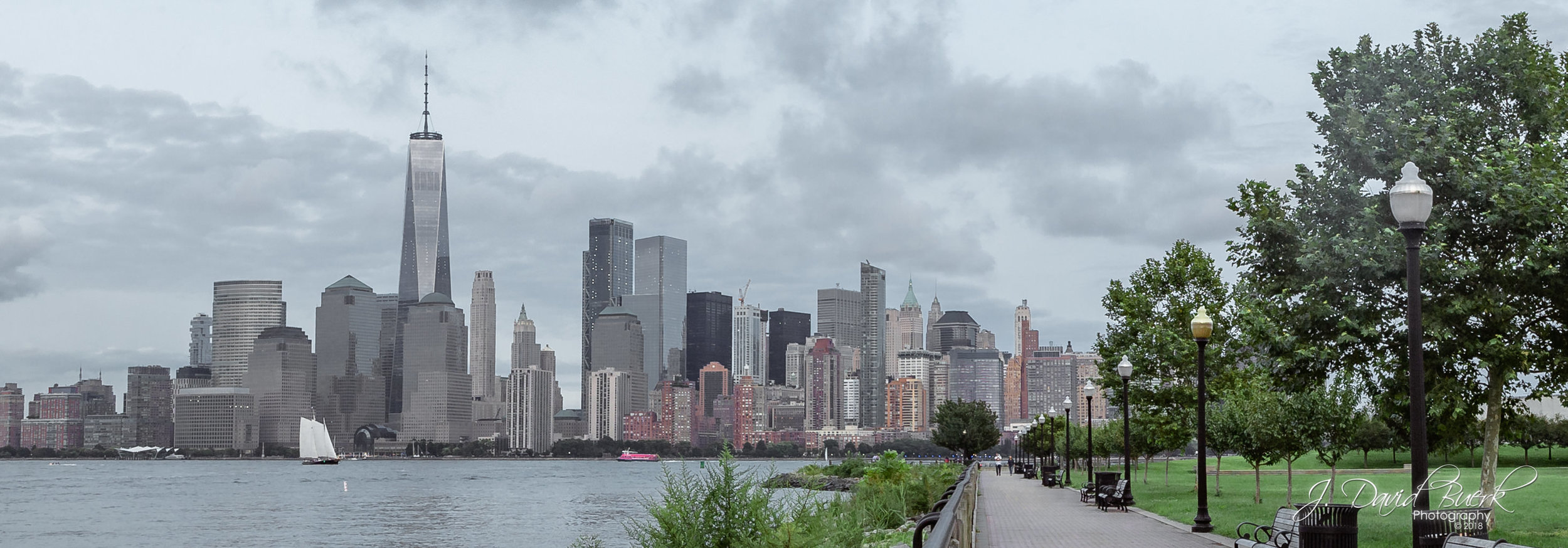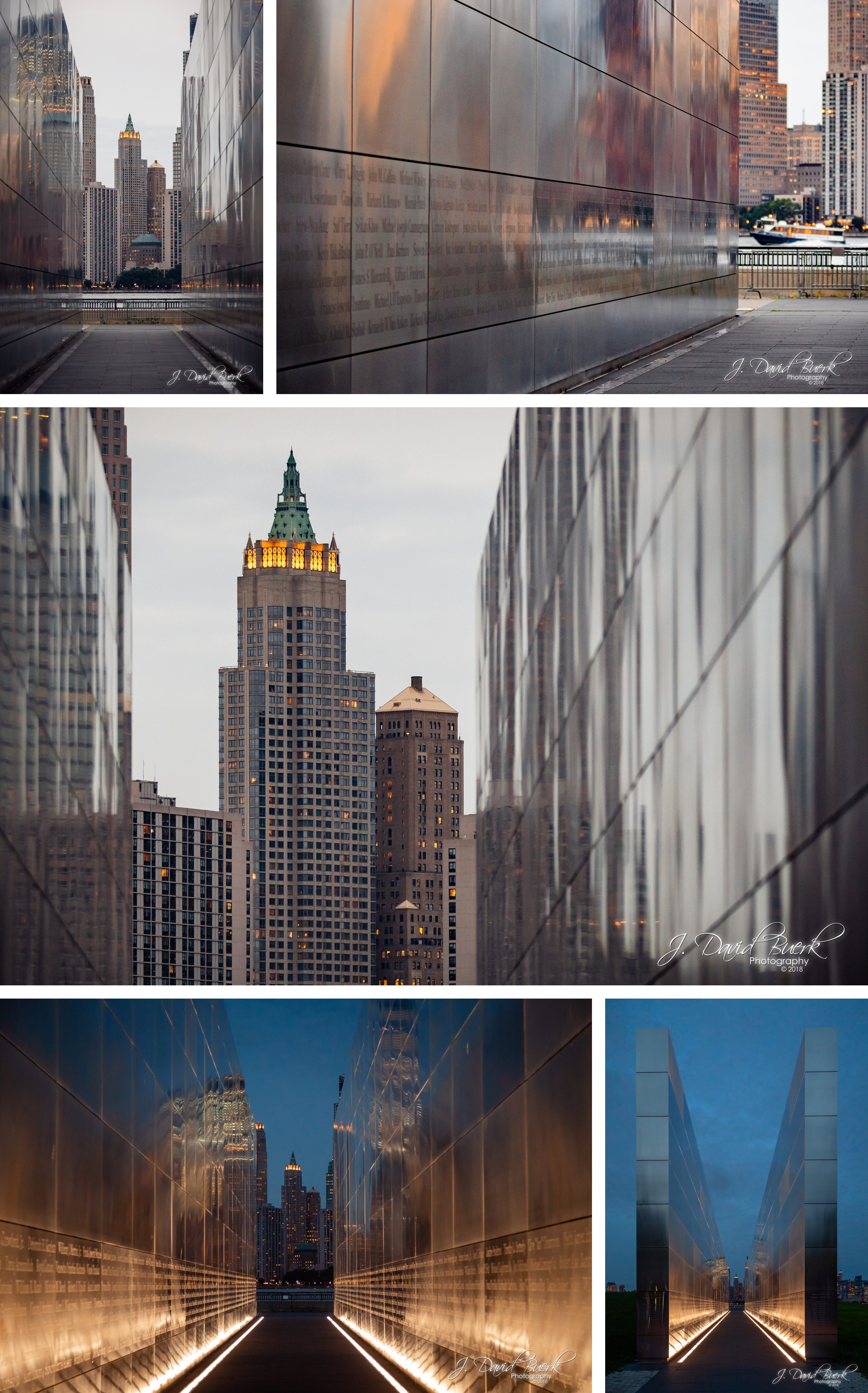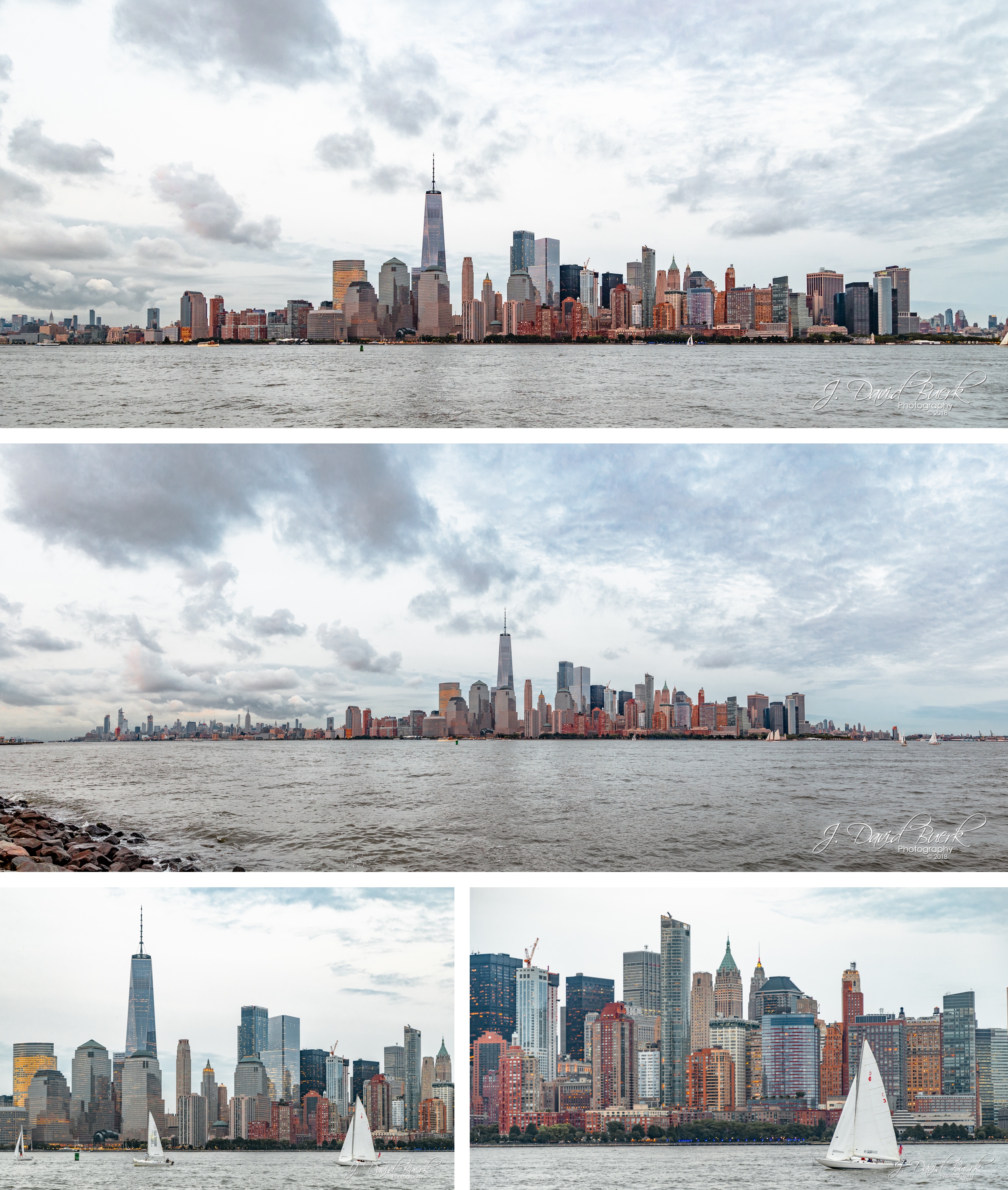All photos from this post, and more, can be viewed fullscreen here.
View photos of my 2015 visit to The National September 11th Memorial & Museum here.
September, 2000
In September, 2000 my family had gone on a trip making its way North along the Eastern seaboard. One of the stops was in Liberty, New Jersey to see The Statue of Liberty and Ellis Island - we never went into Manhattan proper much to my disappointment.
This was WAY before I knew anything about photography - I just liked taking pictures on my little Kodak Advantix.
This is a picture I shot at age 12 in the year 2000 from the Northern side of Liberty State Park, Jersey City, New Jersey - now the current site of the Empty Sky Memorial. I remember my parents bickering over whether "those two tall buildings are the Twin Towers or the World Trade Center." I said I thought they were both; the same thing. Fast forward a year, and everyone in the World knew the answer without a doubt.
It's incredible to me that I even have this picture, that I shot it myself. I was 12. The majority of my life has been post-9/11, working at IAD and DCA. My entire aviation related career arc has directly resulted from that day in 2001. This photo is a relic of a time before that; before the TSA and DHS existed, before all the post-9/11 security and societal changes that resulted.
Here is that photo I unwittingly took at age 12.
September, 2018
This August I travelled to Rhode Island to visit my friend Alyssa on her birthday, however due to a need for flexible scheduling, I made the journey by car rather than flying this time. It occurred to me by doing this I could make a quick stop at Liberty State Park in Liberty, New Jersey and see the Empty Sky memorial, which I’d only learned of its existence about a year prior thanks to my friend Natalie (who happens to live just 5mi away in Weehawken - I got to visit her on my stop as well :-D). I knew it was the same spot I’d taken that photo as a 12 year old, but it wasn’t until the night before leaving I realized I could try and replicate that photo and compare the New York City skyline across 18 years of history. Before going to bed, I printed a scale copy of my 18 year old photo of the New York skyline (the original print would stay safely at home).
Remarkably, the weather was visually similar to that day in 2000. Textured overcast, but no fog obscuring skyscrapers’ upper floors. Inspecting the original picture, I counted 12 light poles visible, which would give me a good starting point to get me close to the same spot for that matching perspective. To my surprise, the park benches and even the trash cans hadn’t changed in all this time. In order to fit all 12 light posts in-frame, I walked back parallel to 13th light post from the end, and incredibly the perspective aligned almost perfectly - even the park benches lined up, though some trash cans moved, as you’d expect they would over the course of 18 years.
I’d come here with a purpose, and to my surprise it took me longer to walk to this spot from my car than it did to fight the wind in correctly lining up my photograph in the shot. Next, I wanted to capture a modern view of the same angle. Taking these photos even required me a lower my camera a little bit to account for my shorter 12 year old stature.
And here are the photos, 2000 and 2018, side-by-side. History in both pictures; the Twin Towers visible in 2000, and One World Trade Center erected adjacent to the empty sky where they once stood. Many other buildings have also sprung up across the skyline, and the freshly planted trees in my original picture are all grown up today.
Continue reading for more views of the New York City skyline later in this post.
Empty Sky
Next stop was the Empty Sky memorial, just steps away, visible in the righthand side of the photos above. Empty Sky was dedicated on September 10, 2011, the day before 9/11’s 10th anniversary. Designed by Jessica Jamroz and Frederic Schwartz, Empty Sky is comprised of twin 30ft tall walls spanning 208ft 10in engraved with the names of all 746 victims of the September 11th attacks; on one side, I beams from the Twin Towers stand solemnly - on the other, directly across the Hudson, lies Ground Zero, and the empty sky in the New York skyline where the Twin Towers had stood. The memorial is impressive at all times of day.
New York City
New York’s sky today is still beautiful, just different. New buildings have sprung up, and One World Trade Center now watches over the city, with the Empire State Building, Chrysler Building, and 432 Park Avenue all overlooking the city uptown. The last five times I’ve been to this city, I’ve been in the city, so this was also happened to be my first opportunity to photograph New York’s cityscape since I was here at age 12.







































































